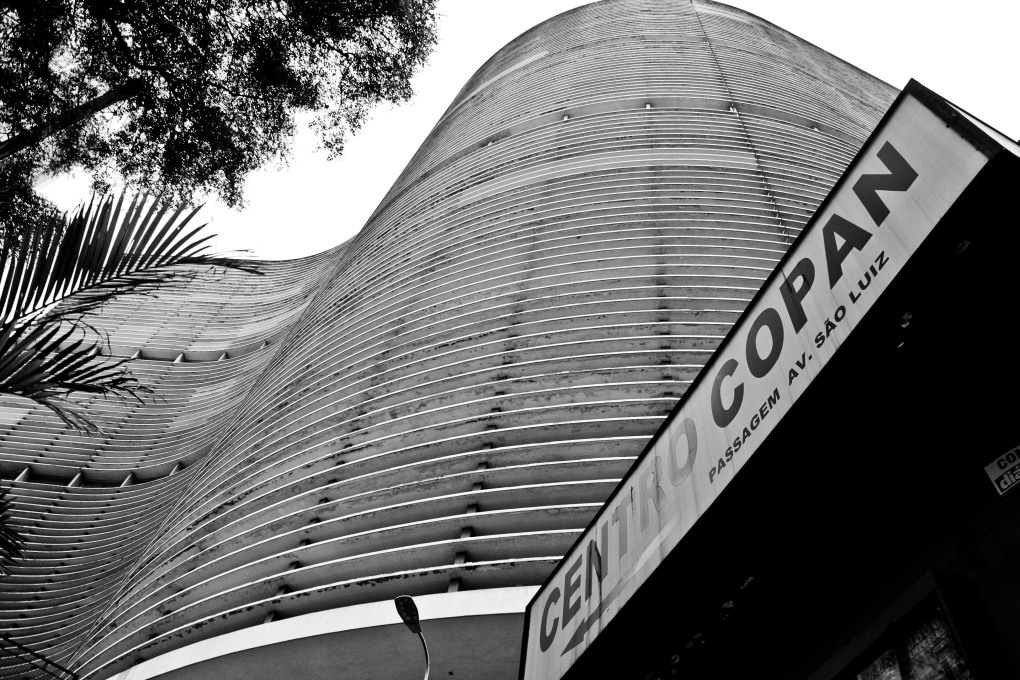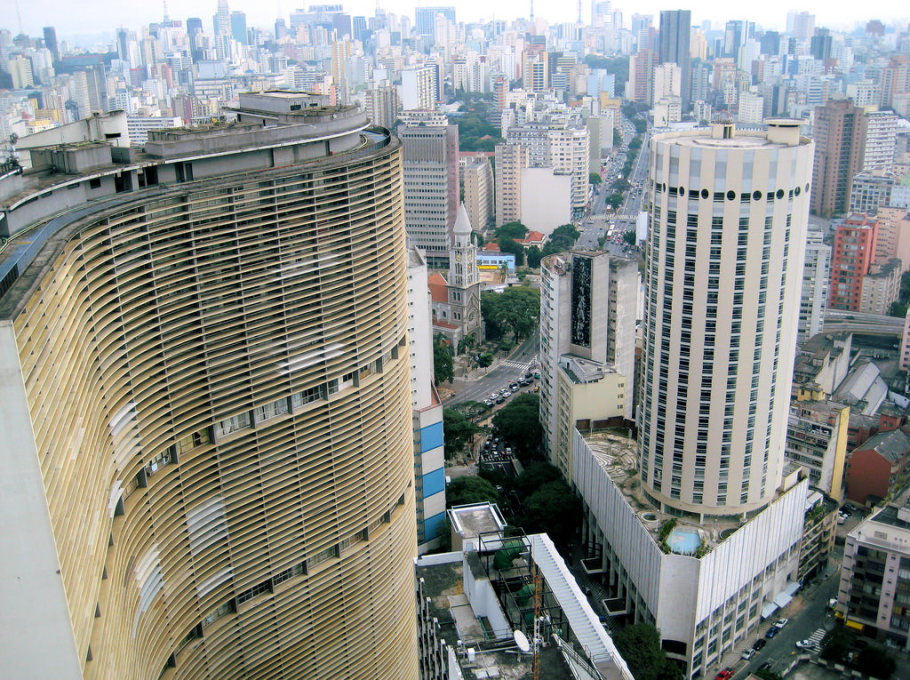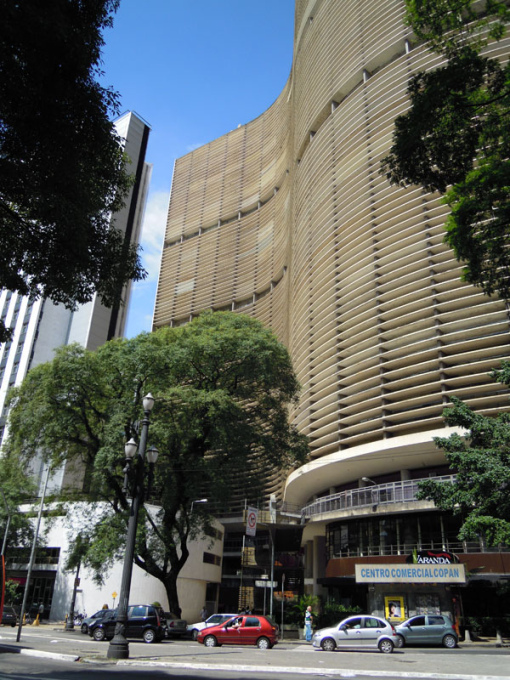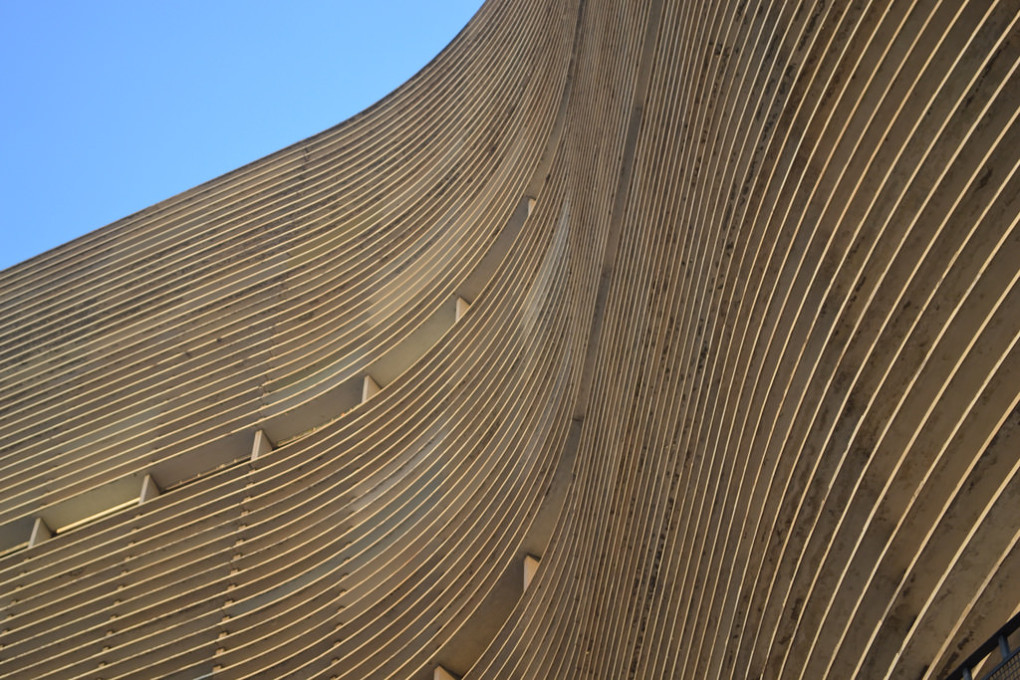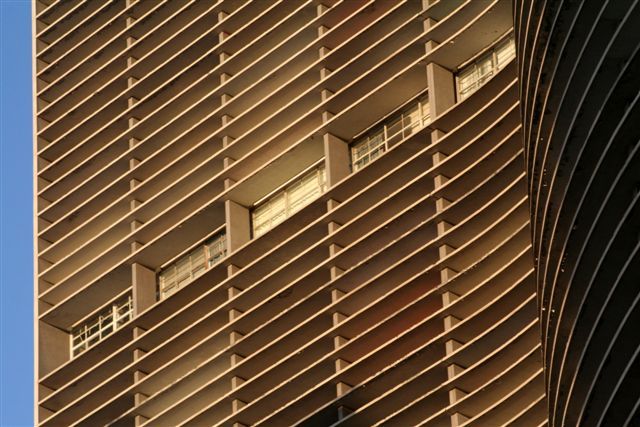Its sinuous façades elegantly sheathed in brise-soleil belie the fact that Oscar Niemeyer’s Edifício Copan in São Paulo is a colossus: one of the largest residential blocks in the world by floor area – a city within a city. Ian Robertson revisits and reassesses this graceful giant.
Though Oscar Niemeyer’s homeland magnum opus may be Brazil’s city-from-scratch capital of Brasília, it’s his interventions in super-dense, sky-high São Paulo that are perhaps his most compelling. His was an architecture of optimism and elegance, and in the shoulder-to-shoulder urbanity of Brazil’s biggest metropolis that's a philosophy that takes skill to make stand out.
There, his legacy lives most graciously and appropriately in the imposing S-shaped Edifício Copan, in the city’s Centro district. A sand-coloured relic of Niemeyer’s heyday, it’s a graceful wave that draws your eye horizontally along its defining brise-soleil – a sweet relief in a city that physically is all about ‘up’. The design is also (almost literally) a symbol of the city. It represents not only social processes and urban change, but its sinuous footprint, the subtle ‘S’, mimics the tilde accent on the São of the city's name and is re-echoed in the wave pattern of its tiled pavements.
Inside the building, glass-front shops line a corridor interspersed with unfussy residents’ entrances bordered by deep-stained vertical wooden slats: worn in, stained with cigarette smoke, and so all the more intriguing. There’s a story and a soul in the Copan, like much of São Paulo, always accessible a bit beyond the immediate, in the details: wood-panelled elevators bring you to upper floors, opening onto sloped walkways, not stairs. And, apartments benefit from floor-to-ceiling windows, something you might not expect from a building with a concrete façade. Residents have described a harmony inside the building that doesn’t exist outside.
Few pictures of the building even attempt to take in the entire structure, and standing at its doorstep you feel as overwhelmed as the photographer’s camera. The Edifício Copan is so large – 140 metres tall, with 1,160 apartments and over 4,000 residents – that it was given its own postcode. It was designed in 1951, at a time when Centro was booming. But today, as the core of the city’s wealth and power has moved elsewhere, the Copan shows the signs of the neighbourhood’s mutable history.
Within the building, many of its 72 retail spaces sit shuttered – or seemingly vastly underused (barring the exceptions of the time-untouched Café Floresta and the Bar da Dona Onça). And, from outside, staring upward, the signature brise-soleil sit in sad shape, chipped and weathered – the unfortunate state of many of Niemeyer’s great buildings like the Niteroi Museum or the Oca Pavilion. Their effect remains intact however. Not just functional in fending off the bright sun and heat of the city, they provide such a strong suggestion of horizontality that it moves your eyes along, rather than up, this behemoth. They visually squish its 30-plus storeys into something more human-scale, including the businesses (operating or not) at its ground level which are not an afterthought but a true baseline to the building: amenities winning out over fancy lobbies or private spaces. It stands in contrast to its taller, more slender neighbour, the Edifício Italia – there, one can only peer way up to its rooftop restaurant.
But, the district of Centro is turning itself around – City Hall is making investments there, from infrastructure to police presence – and with it the Edifício Copan is having a social renaissance. Gentrification is slotting itself into the empty spaces of the district, and new residents of the Copan are not only cleaning up their homestead, but also imposing new expectations on its adjacent streets. The Copan continues to change along with the city around it, and yet Niemeyer’s careful design remains not only a postcard of São Paulo, but of Brazil.
– Ian Robertson
Ian Robertson is a Canadian writer and urbanist.




